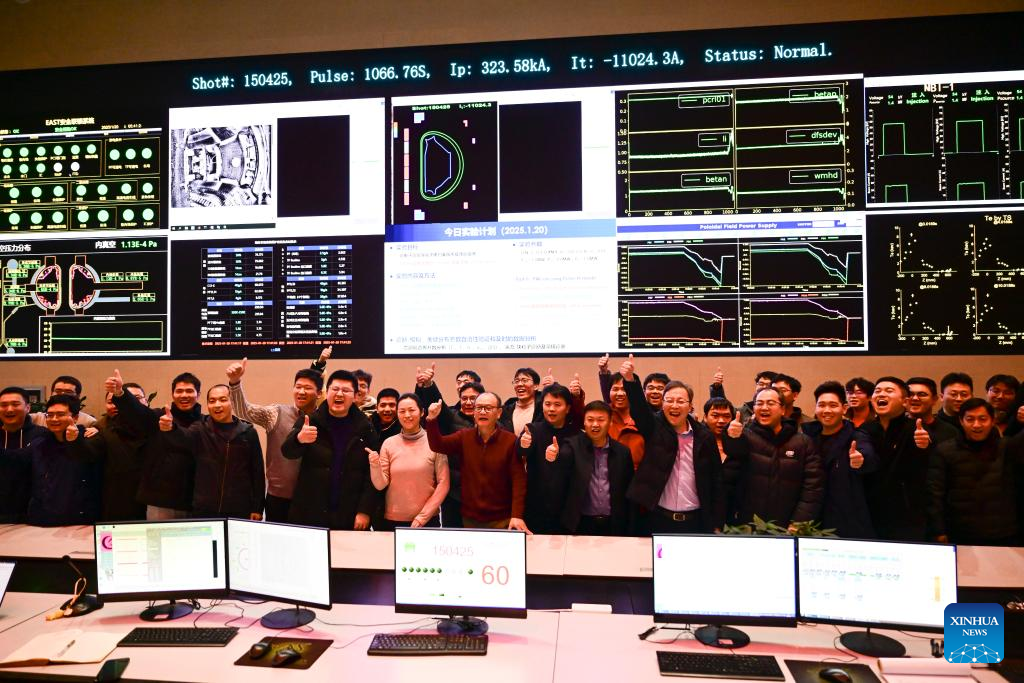
Members of division of the Experimental Advanced Superconducting Tokamak (EAST) Physics and Experimental Operations celebrate the success of an experiment in Hefei, east China's Anhui Province, Jan. 20, 2025. The Experimental Advanced Superconducting Tokamak (EAST), dubbed China's "artificial sun," maintained a steady-state high-confinement plasma operation for a remarkable 1,066 seconds on Monday, setting a new world record and marking a breakthrough in the quest for fusion power generation. The duration of 1,000 seconds is considered a key step in fusion research. The breakthrough, achieved by the Institute of Plasma Physics under the Chinese Academy of Sciences, greatly improved the original world record of 403 seconds, which was also set by EAST in 2023. (Xinhua/Zhou Mu)
HEFEI, Jan. 20 (Xinhua) -- The Experimental Advanced Superconducting Tokamak (EAST), dubbed China's "artificial sun," maintained a steady-state high-confinement plasma operation for a remarkable 1,066 seconds on Monday, setting a new world record and marking a breakthrough in the quest for fusion power generation.
The duration of 1,000 seconds is considered a key step in fusion research. The breakthrough, achieved by the Institute of Plasma Physics under the Chinese Academy of Sciences (ASIPP), greatly improved the original world record of 403 seconds, which was also set by EAST in 2023.
The ultimate goal of an artificial sun is to create nuclear fusion like the sun, providing humanity with an endless, clean energy source, and enabling space exploration beyond the solar system.
Global scientists have worked for more than 70 years on trying to achieve this feat. However, only after reaching temperatures over 100 million degrees Celsius, sustaining stable long-term operation, and ensuring controllability can a nuclear fusion device successfully generate electricity.
"A fusion device must achieve stable operation at high efficiency for thousands of seconds to enable the self-sustaining circulation of plasma, which is critical for the continuous power generation of future fusion plants," said Song Yuntao, ASIPP director. He emphasized that the fresh record is of monumental significance, representing a crucial step toward the development of a fusion reactor.
Gong Xianzu, head of the division of EAST Physics and Experimental Operations, said they have upgraded several EAST systems since the last round of experiments. For example, the heating system, which previously operated at the equivalent of nearly 70,000 household microwave ovens, has now doubled its power output while also maintaining stability and continuity.
Since starting operation in 2006, EAST has been an open test platform for Chinese and international scientists to conduct fusion-related experiments and research.
China officially joined the International Thermonuclear Experimental Reactor (ITER) program in 2006 as its seventh member. According to the agreement, China is responsible for about 9 percent of the project's construction and operation -- and ASIPP is the main unit of the Chinese mission.
ITER, which is under construction in southern France, will be the world's largest magnetic confinement plasma physics experiment device and the largest experimental tokamak nuclear fusion reactor, once completed.
In recent years, EAST has continuously achieved groundbreaking milestones in the high confinement mode, which serves as the fundamental mode for experimental fusion reactors, including ITER and the future China Fusion Engineering Test Reactor (CFETR), providing valuable references for the construction of fusion reactors worldwide.
"We hope to expand international collaboration via EAST and bring fusion energy into practical use for humanity," said Song.
In Hefei, east China's Anhui Province, where EAST is located, a new generation of experimental fusion research facilities is under construction -- aiming to further accelerate the application and development of fusion energy. ■
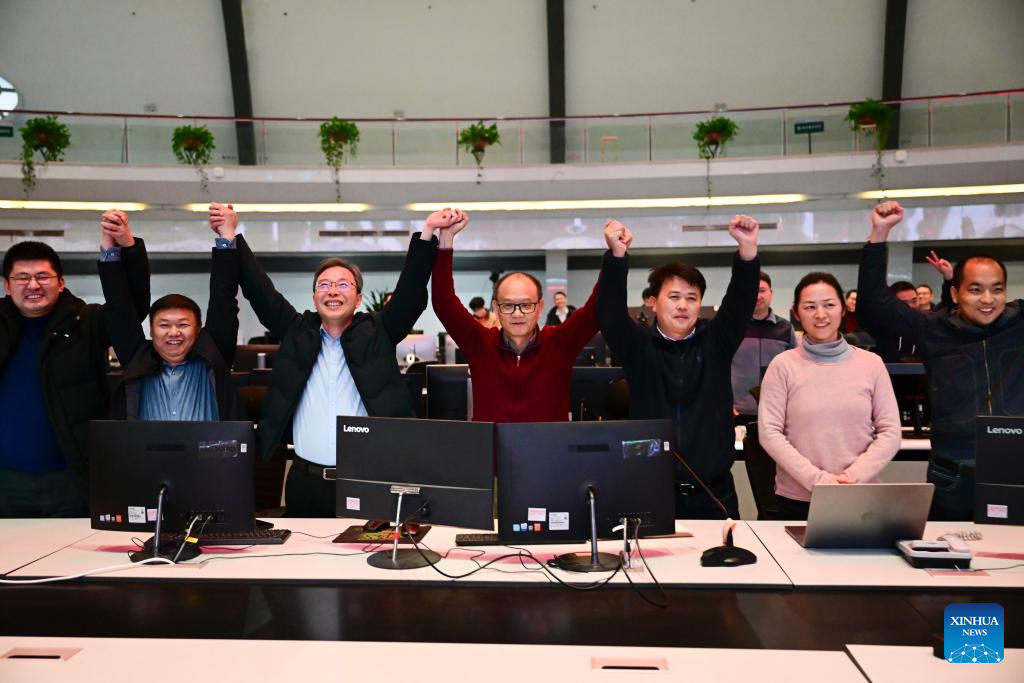
Gong Xianzu (4th, L), head of division of the Experimental Advanced Superconducting Tokamak (EAST) Physics and Experimental Operations, and other team members celebrate the success of an experiment in Hefei, east China's Anhui Province, Jan. 20, 2025. The Experimental Advanced Superconducting Tokamak (EAST), dubbed China's "artificial sun," maintained a steady-state high-confinement plasma operation for a remarkable 1,066 seconds on Monday, setting a new world record and marking a breakthrough in the quest for fusion power generation.
The duration of 1,000 seconds is considered a key step in fusion research. The breakthrough, achieved by the Institute of Plasma Physics under the Chinese Academy of Sciences, greatly improved the original world record of 403 seconds, which was also set by EAST in 2023. (Xinhua/Zhou Mu)

Gong Xianzu (R), head of division of the Experimental Advanced Superconducting Tokamak (EAST) Physics and Experimental Operations, and Lu Kun, deputy director of Institute of Plasma Physics of the Chinese Academy of Sciences (ASIPP), celebrate in Hefei, east China's Anhui Province, Jan. 20, 2025. The Experimental Advanced Superconducting Tokamak (EAST), dubbed China's "artificial sun," maintained a steady-state high-confinement plasma operation for a remarkable 1,066 seconds on Monday, setting a new world record and marking a breakthrough in the quest for fusion power generation.
The duration of 1,000 seconds is considered a key step in fusion research. The breakthrough, achieved by the Institute of Plasma Physics under the Chinese Academy of Sciences, greatly improved the original world record of 403 seconds, which was also set by EAST in 2023. (Xinhua/Zhou Mu)
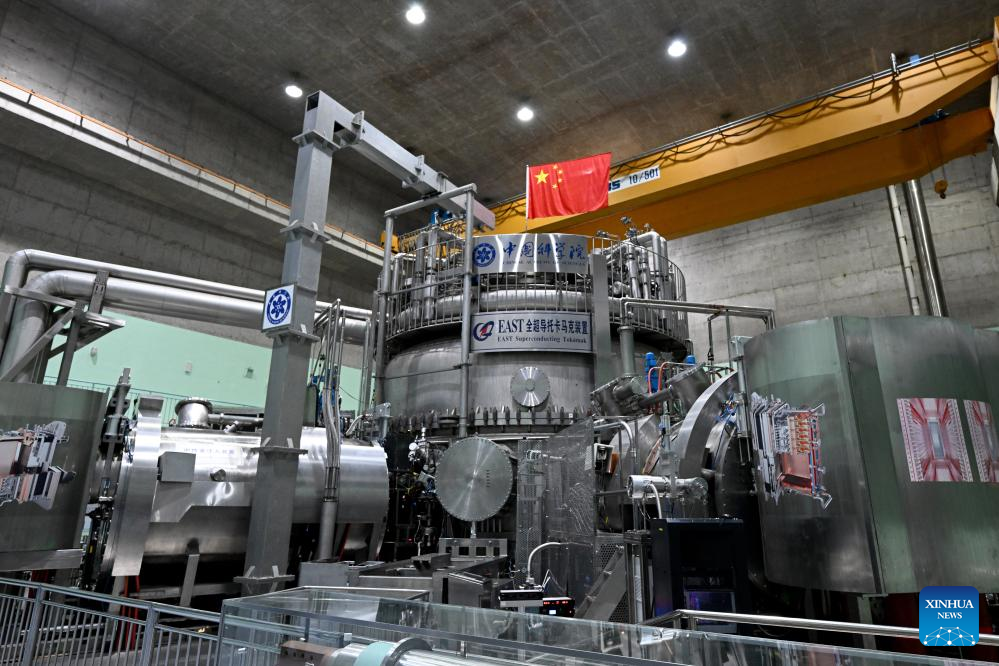
This photo shows the Experimental Advanced Superconducting Tokamak (EAST) in Hefei, east China's Anhui Province, Jan. 15, 2025. The Experimental Advanced Superconducting Tokamak (EAST), dubbed China's "artificial sun," maintained a steady-state high-confinement plasma operation for a remarkable 1,066 seconds on Monday, setting a new world record and marking a breakthrough in the quest for fusion power generation.
The duration of 1,000 seconds is considered a key step in fusion research. The breakthrough, achieved by the Institute of Plasma Physics under the Chinese Academy of Sciences, greatly improved the original world record of 403 seconds, which was also set by EAST in 2023. (Xinhua/Huang Bohan)
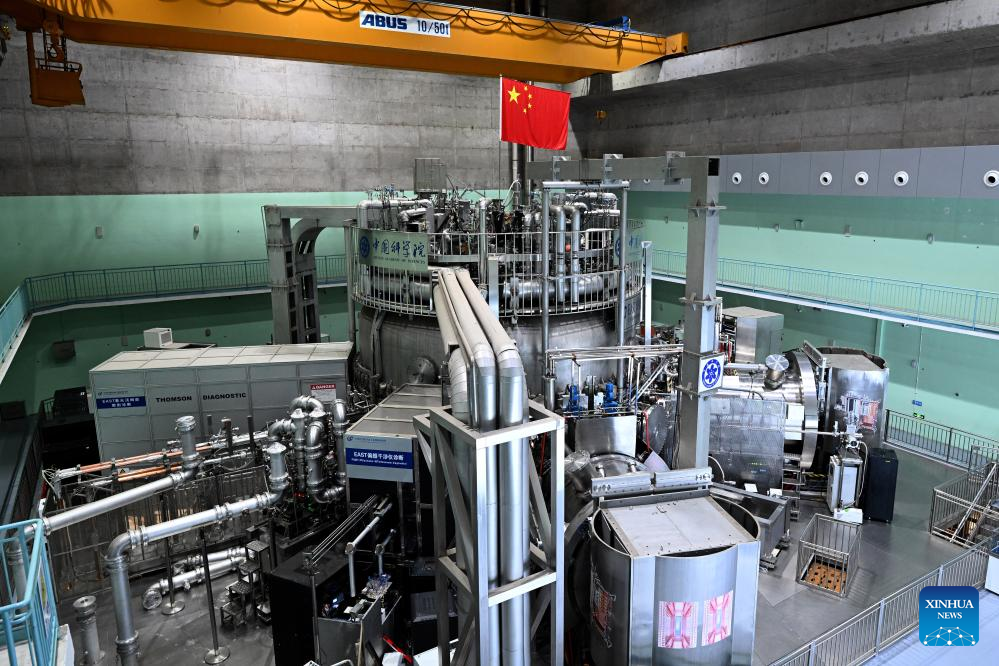
This photo shows the Experimental Advanced Superconducting Tokamak (EAST) in Hefei, east China's Anhui Province, Jan. 15, 2025. The Experimental Advanced Superconducting Tokamak (EAST), dubbed China's "artificial sun," maintained a steady-state high-confinement plasma operation for a remarkable 1,066 seconds on Monday, setting a new world record and marking a breakthrough in the quest for fusion power generation.
The duration of 1,000 seconds is considered a key step in fusion research. The breakthrough, achieved by the Institute of Plasma Physics under the Chinese Academy of Sciences, greatly improved the original world record of 403 seconds, which was also set by EAST in 2023. (Xinhua/Huang Bohan)
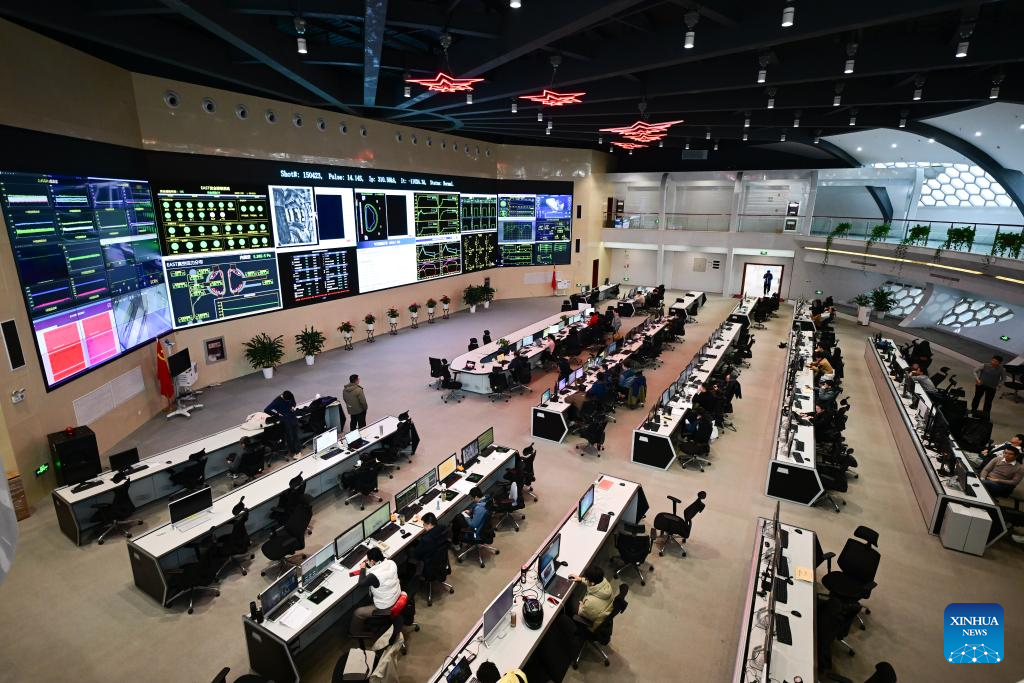
This photo shows the control center of the Experimental Advanced Superconducting Tokamak (EAST) in Hefei, east China's Anhui Province, Jan. 20, 2025. The Experimental Advanced Superconducting Tokamak (EAST), dubbed China's "artificial sun," maintained a steady-state high-confinement plasma operation for a remarkable 1,066 seconds on Monday, setting a new world record and marking a breakthrough in the quest for fusion power generation.
The duration of 1,000 seconds is considered a key step in fusion research. The breakthrough, achieved by the Institute of Plasma Physics under the Chinese Academy of Sciences, greatly improved the original world record of 403 seconds, which was also set by EAST in 2023. (Xinhua/Zhou Mu)
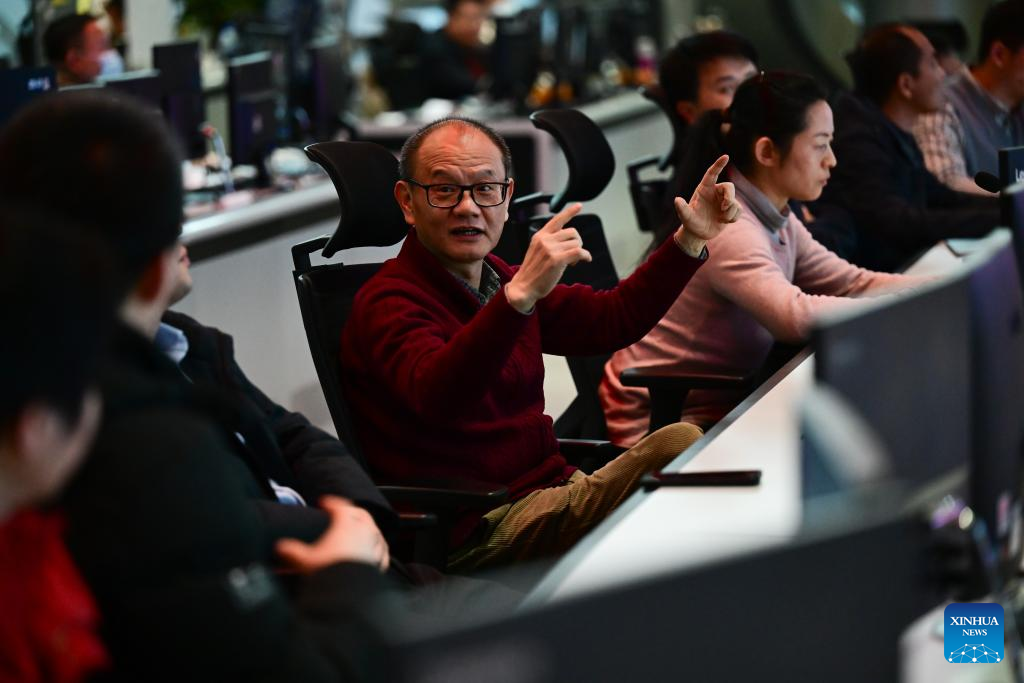
Gong Xianzu (C), head of division of the Experimental Advanced Superconducting Tokamak (EAST) Physics and Experimental Operations, communicates with team members during an experiment in Hefei, east China's Anhui Province, Jan. 20, 2025. The Experimental Advanced Superconducting Tokamak (EAST), dubbed China's "artificial sun," maintained a steady-state high-confinement plasma operation for a remarkable 1,066 seconds on Monday, setting a new world record and marking a breakthrough in the quest for fusion power generation.
The duration of 1,000 seconds is considered a key step in fusion research. The breakthrough, achieved by the Institute of Plasma Physics under the Chinese Academy of Sciences, greatly improved the original world record of 403 seconds, which was also set by EAST in 2023. (Xinhua/Zhou Mu)
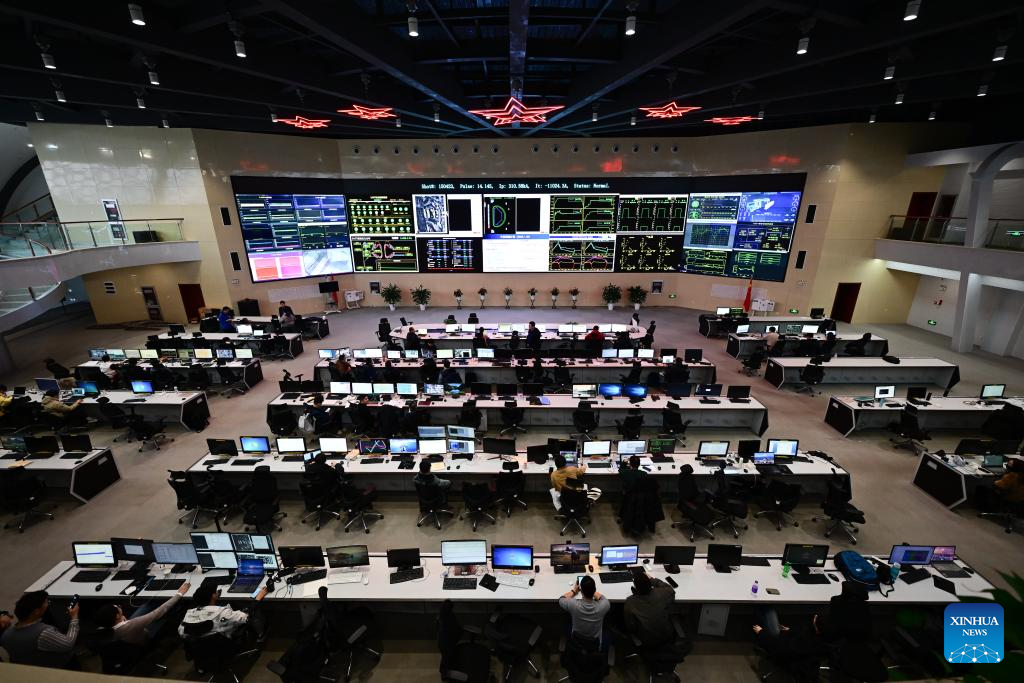
This photo shows the control center of the Experimental Advanced Superconducting Tokamak (EAST) in Hefei, east China's Anhui Province, Jan. 20, 2025. The Experimental Advanced Superconducting Tokamak (EAST), dubbed China's "artificial sun," maintained a steady-state high-confinement plasma operation for a remarkable 1,066 seconds on Monday, setting a new world record and marking a breakthrough in the quest for fusion power generation.
The duration of 1,000 seconds is considered a key step in fusion research. The breakthrough, achieved by the Institute of Plasma Physics under the Chinese Academy of Sciences, greatly improved the original world record of 403 seconds, which was also set by EAST in 2023. (Xinhua/Zhou Mu)
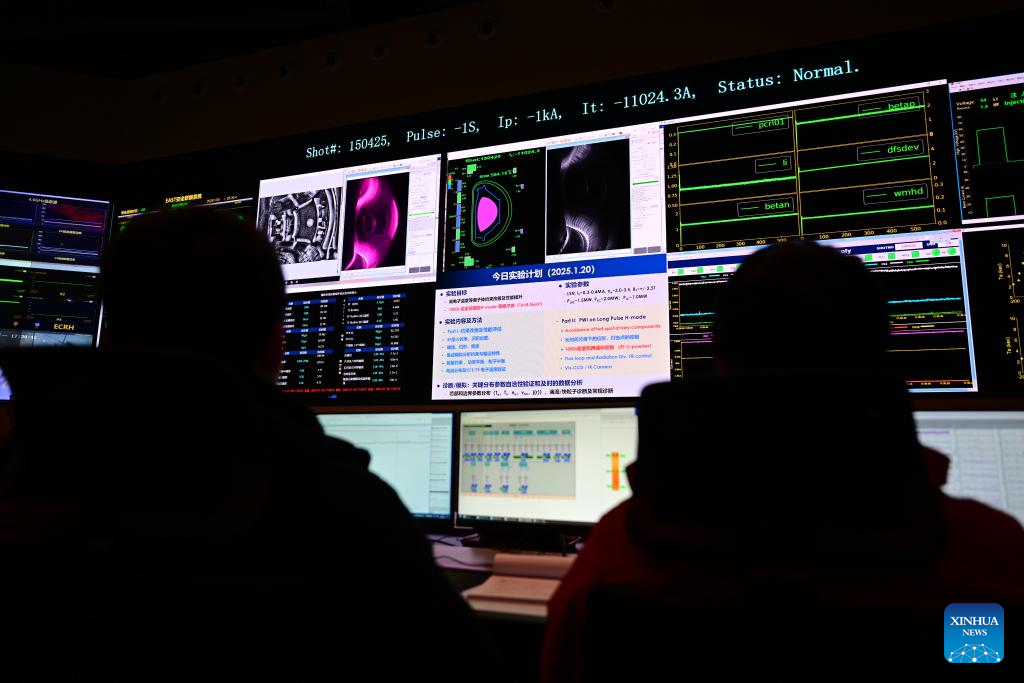
Team members of division of the Experimental Advanced Superconducting Tokamak (EAST) Physics and Experimental Operations observe data during an experiment in Hefei, east China's Anhui Province, Jan. 20, 2025. The Experimental Advanced Superconducting Tokamak (EAST), dubbed China's "artificial sun," maintained a steady-state high-confinement plasma operation for a remarkable 1,066 seconds on Monday, setting a new world record and marking a breakthrough in the quest for fusion power generation.
The duration of 1,000 seconds is considered a key step in fusion research. The breakthrough, achieved by the Institute of Plasma Physics under the Chinese Academy of Sciences, greatly improved the original world record of 403 seconds, which was also set by EAST in 2023. (Xinhua/Zhou Mu)
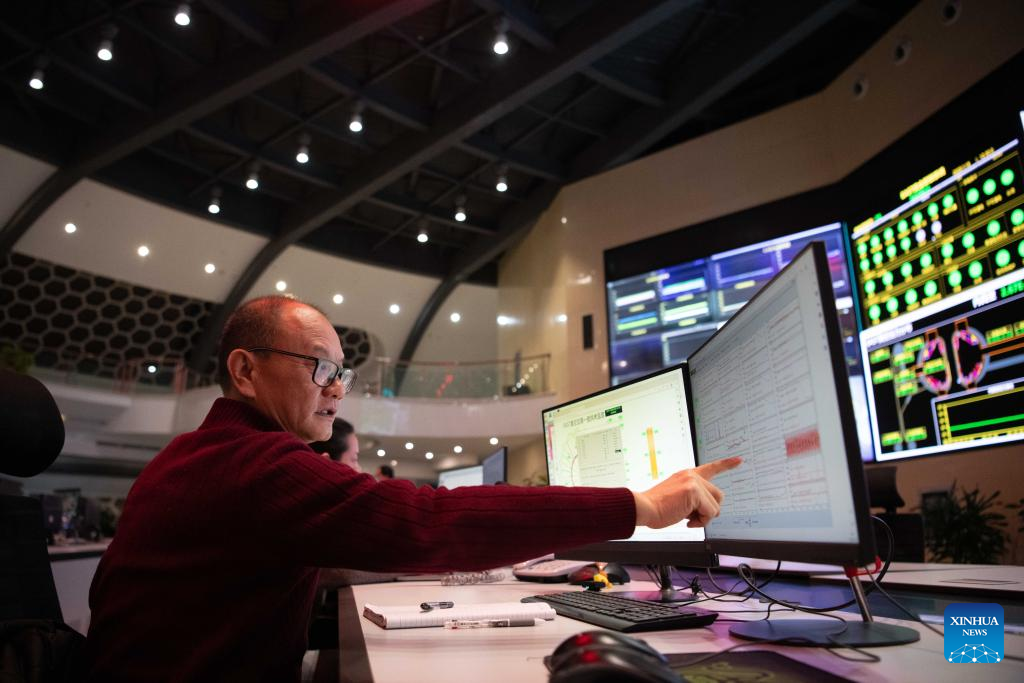
Gong Xianzu, head of division of the Experimental Advanced Superconducting Tokamak (EAST) Physics and Experimental Operations, communicates with team members during an experiment in Hefei, east China's Anhui Province, Jan. 18, 2025. The Experimental Advanced Superconducting Tokamak (EAST), dubbed China's "artificial sun," maintained a steady-state high-confinement plasma operation for a remarkable 1,066 seconds on Monday, setting a new world record and marking a breakthrough in the quest for fusion power generation.
The duration of 1,000 seconds is considered a key step in fusion research. The breakthrough, achieved by the Institute of Plasma Physics under the Chinese Academy of Sciences, greatly improved the original world record of 403 seconds, which was also set by EAST in 2023. (Xinhua/Zhang Duan)
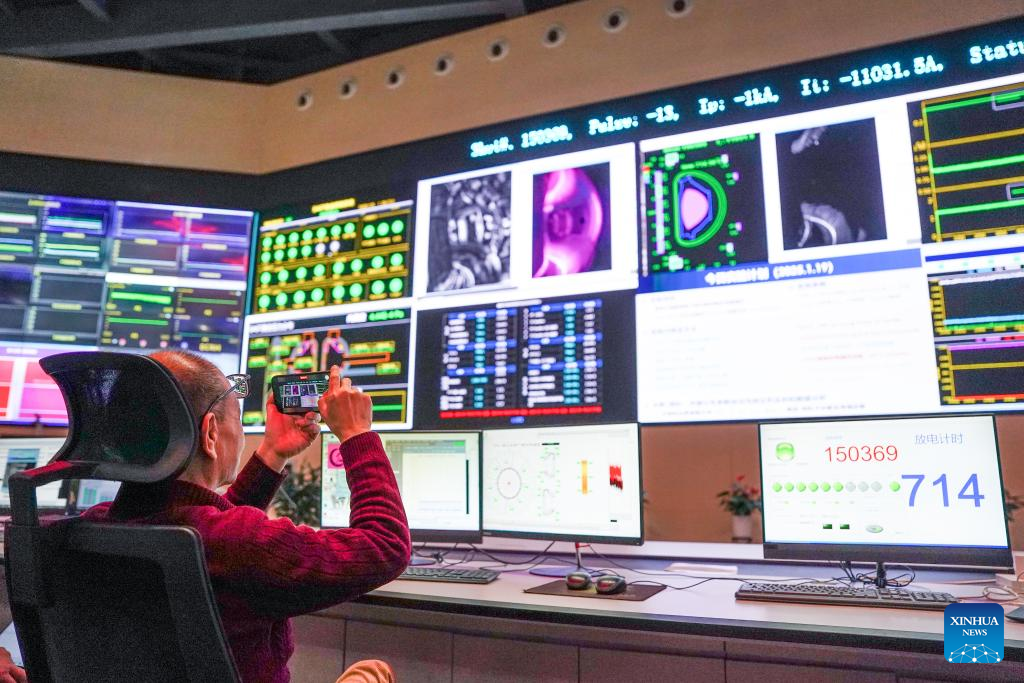
Gong Xianzu, head of division of the Experimental Advanced Superconducting Tokamak (EAST) Physics and Experimental Operations, observes data during an experiment in Hefei, east China's Anhui Province, Jan. 19, 2025. The Experimental Advanced Superconducting Tokamak (EAST), dubbed China's "artificial sun," maintained a steady-state high-confinement plasma operation for a remarkable 1,066 seconds on Monday, setting a new world record and marking a breakthrough in the quest for fusion power generation.
The duration of 1,000 seconds is considered a key step in fusion research. The breakthrough, achieved by the Institute of Plasma Physics under the Chinese Academy of Sciences, greatly improved the original world record of 403 seconds, which was also set by EAST in 2023. (Xinhua/Du Yu)
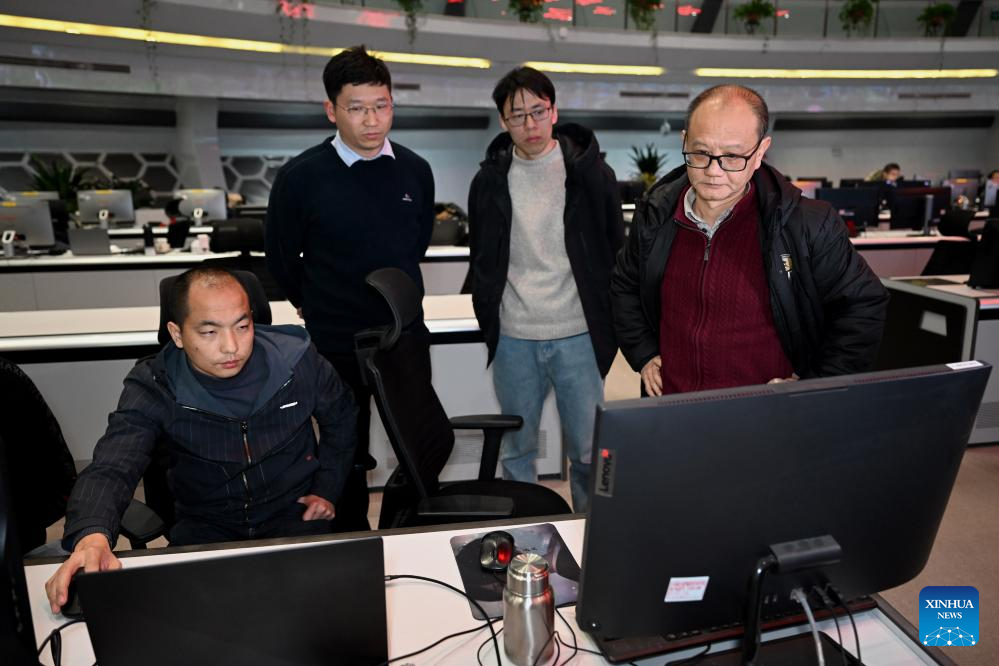
Gong Xianzu (1st, R), head of division of the Experimental Advanced Superconducting Tokamak (EAST) Physics and Experimental Operations, communicates with team members after an experiment in Hefei, east China's Anhui Province, Jan. 16, 2025. The Experimental Advanced Superconducting Tokamak (EAST), dubbed China's "artificial sun," maintained a steady-state high-confinement plasma operation for a remarkable 1,066 seconds on Monday, setting a new world record and marking a breakthrough in the quest for fusion power generation.
The duration of 1,000 seconds is considered a key step in fusion research. The breakthrough, achieved by the Institute of Plasma Physics under the Chinese Academy of Sciences, greatly improved the original world record of 403 seconds, which was also set by EAST in 2023. (Xinhua/Huang Bohan)

Gong Xianzu, head of division of the Experimental Advanced Superconducting Tokamak (EAST) Physics and Experimental Operations, observes data during an experiment in Hefei, east China's Anhui Province, Jan. 20, 2025. The Experimental Advanced Superconducting Tokamak (EAST), dubbed China's "artificial sun," maintained a steady-state high-confinement plasma operation for a remarkable 1,066 seconds on Monday, setting a new world record and marking a breakthrough in the quest for fusion power generation.
The duration of 1,000 seconds is considered a key step in fusion research. The breakthrough, achieved by the Institute of Plasma Physics under the Chinese Academy of Sciences, greatly improved the original world record of 403 seconds, which was also set by EAST in 2023. (Xinhua/Zhou Mu)
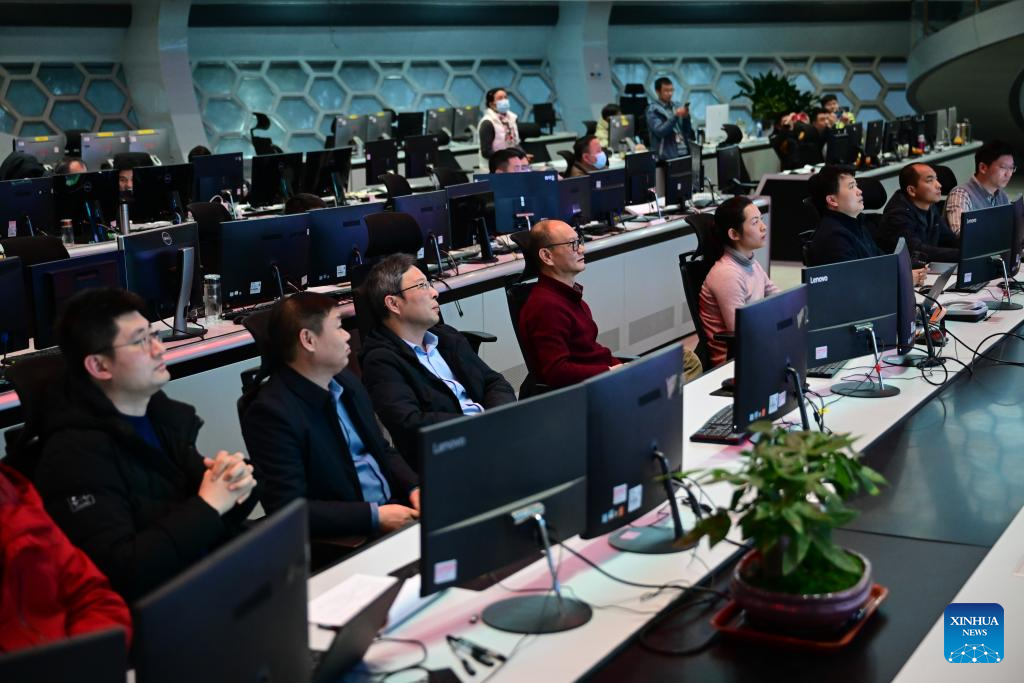
Team members of division of the Experimental Advanced Superconducting Tokamak (EAST) Physics and Experimental Operations observe data during an experiment in Hefei, east China's Anhui Province, Jan. 20, 2025. The Experimental Advanced Superconducting Tokamak (EAST), dubbed China's "artificial sun," maintained a steady-state high-confinement plasma operation for a remarkable 1,066 seconds on Monday, setting a new world record and marking a breakthrough in the quest for fusion power generation.
The duration of 1,000 seconds is considered a key step in fusion research. The breakthrough, achieved by the Institute of Plasma Physics under the Chinese Academy of Sciences, greatly improved the original world record of 403 seconds, which was also set by EAST in 2023. (Xinhua/Zhou Mu)



